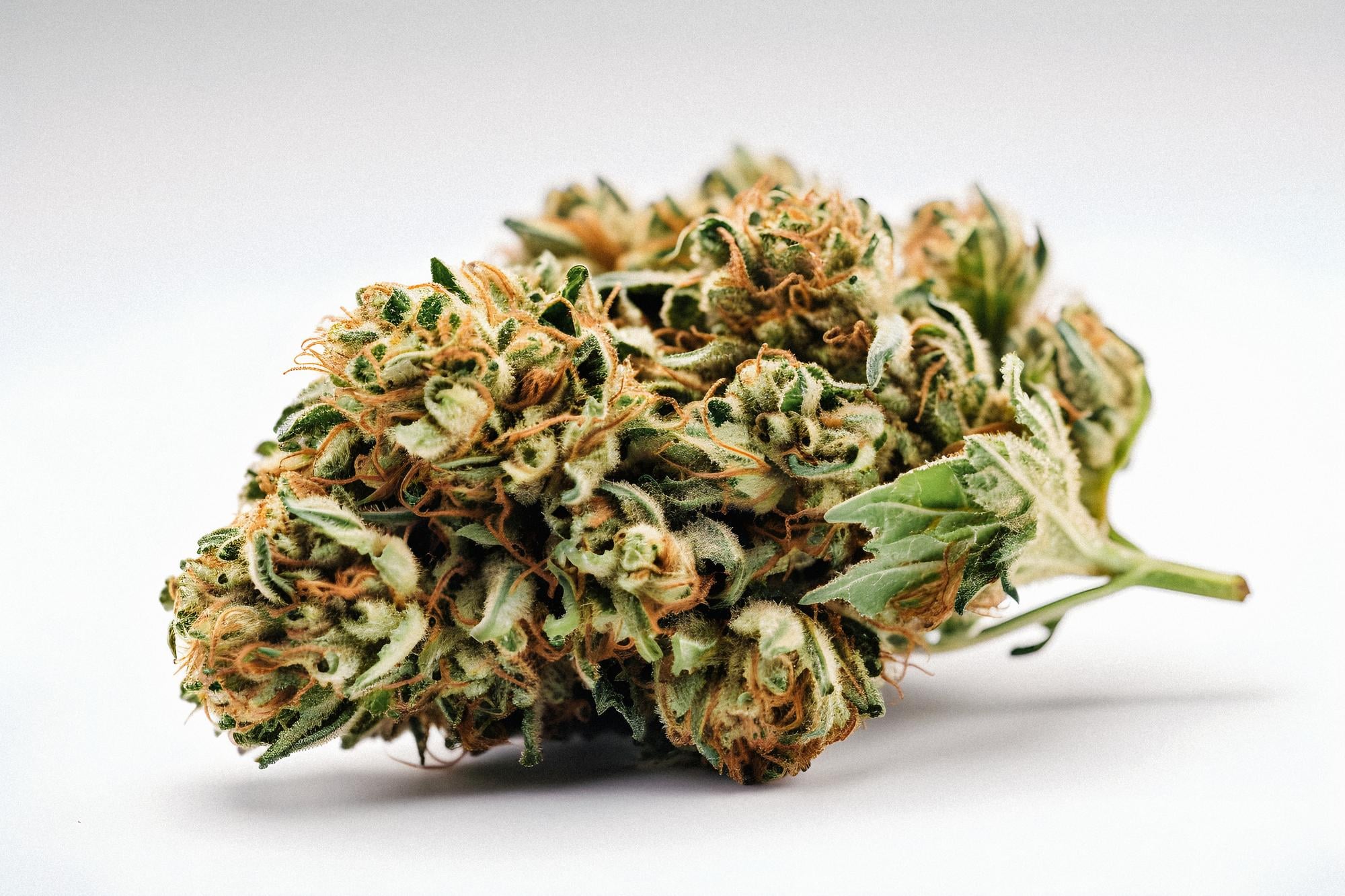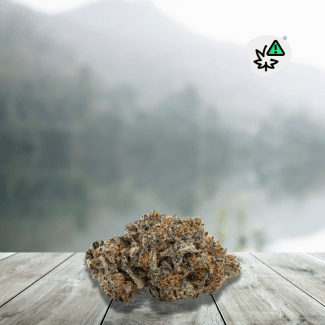
The emergence of THCP as a potential psychoactive compound
THCP , or tetrahydrocannabiphorol, is a recently discovered compound in cannabis that is attracting growing interest due to its potential psychoactive effects. It has been identified as being up to 30 times more potent than THC, the well-known psychoactive compound in cannabis. Current research suggests that THCP may have more potent psychoactive effects, as well as purported therapeutic effects such as relieving pain, reducing inflammation, and improving mood.
However, our knowledge about THCP is still limited, and more research is needed to better understand its potential effects on the human body. It is important to note that most studies on THCP have been done in the laboratory, and clinical research is needed to evaluate its effects in humans.
In conclusion, THCP is emerging as a potentially potent psychoactive compound, with potential effects and presumed therapeutic effects, but further research is needed to better understand its effects and therapeutic potential.
What is THCP?
THCP is an acronym for tetrahydrocannabinolphenylcarboxylic acid, a molecule recently discovered by Italian researchers. This molecule has psychoactive effects up to 30 times more powerful than THC, the main compound in cannabis. This discovery has aroused great interest in the scientific and medical community, as it opens new perspectives for research into cannabinoids and their effects on the human body. In this article we will explain in detail what THCP is, how it acts on the body and what the implications of its discovery are for the cannabis industry and medicine.
Definition of THCP
Tetrahydrocannabiphorol (THCP) is a recently discovered cannabinoid studied for its unique properties and effects. Unlike THC, THCP is much more potent and has interesting pharmacological properties.
The method of producing THCP generally involves extraction and isolation from cannabis plants rich in this cannabinoid. The felt effects of THCP are similar to those of THC, but are often described as more potent and long-lasting.
When it comes to the legality and purchase of THCP, it is important to note that its regulations may vary from country to country. Some countries have allowed the use and sale of products containing THCP, while others still prohibit it. It is therefore crucial to learn about local legislation before purchasing or consuming THCP.
In summary, THCP is a promising cannabinoid with unique properties and effects. Its production, effects, and legality are important aspects to consider for anyone interested in using this compound.
Molecular structure and composition
CBD molecule , or cannabidiol, is made up of 21 atoms in total, including 30 hydrogen atoms, 2 oxygen atoms, and 21 carbon atoms. The molecular structure of CBD consists of two adjacent pentagon rings, with a hydroxyl group (-OH) attached to one of the carbon rings. The chemical bonds in the CBD molecule are primarily single bonds (CC and CH), with one double bond (C=O) in the carbonyl group attached to the carbon ring.
The molecular composition of CBD gives it unique chemical and physical properties, such as its ability to interact with the human body's endocannabinoid system. The constituent atoms of the CBD molecule also give it anti-inflammatory, analgesic, and anxiolytic properties, making it a promising compound for a variety of medical applications. Additionally, CBD's molecular structure gives it a low affinity for the CB1 and CB2 cannabinoid receptors, making it a compound capable of providing health benefits without producing unwanted psychoactive effects.
Comparison with other cannabinoids
THCP is a recently discovered cannabinoid that is distinguished by its longer carbon side chain compared to THC and CBD. This unique characteristic gives it a stronger potential to interact with the endocannabinoid system, meaning it can have more potent effects than other cannabinoids. CBDP, another recently discovered cannabinoid, also has a longer carbon side chain.
Compared to THC and CBD, THCP and CBDP have a more complex molecular structure, which could potentially increase their effectiveness compared to more common cannabinoids. Additionally, these novel cannabinoids may also have distinct therapeutic effects due to their unique interaction with the endocannabinoid system.
It's important to note that research on THCP and CBDP is still limited, and much remains to be learned about their potential health effects. However, these recent discoveries could open up new perspectives in the field of medicinal cannabis and cannabinoid research.
Effects of THCP on the body
THCP is a cannabinoid that is attracting great research interest due to its potential effects on the body. Its effects are still poorly understood, but preliminary studies suggest it may have a significant impact on the endocannabinoid system. In the following, we'll explore the effects of THCP on the body and what current research reveals about it.
Interaction with CB1 receptors in the brain
THCP has recently attracted great interest due to its potential effects on CB1 receptors in the brain. Unlike THC and CBD, THCP appears to interact uniquely with these receptors, providing new possibilities in the field of cannabinoid research.
When interacting with CB1 receptors, THCP appears to have a higher affinity and more intense activity than THC. This could mean it has even greater potential to produce psychoactive and medicinal effects.
This different interaction can have significant effects on the body and mind. Due to its greater potency, THCP may have more pronounced effects on cognition, mood, pain, and other physiological functions regulated by CB1 receptors.
In short, THCP offers an exciting field of research to study the potential effects of this interaction on the body and mind, and opens new perspectives for a better understanding of cannabinoids and their effects on human health.
How THCP affects neurotransmitters and brain activity
THCP, a recently discovered cannabinoid, affects neurotransmitters and brain activity by binding to CB1 and CB2 receptors of the endocannabinoid system. THCP's affinity for these receptors allows for modulation of nerve signal transmission, which can impact mood, pain, appetite, sleep and the immune system.
By binding to CB1 receptors, THCP can influence brain activity by modulating the release of neurotransmitters such as serotonin, dopamine and GABA. This interaction can affect mood, stress and anxiety. Additionally, by binding to CB2 receptors, THCP can influence the inflammatory response and pain, as well as regulate immune system activity.
In summary, THCP affects neurotransmitters and brain activity by acting on CB1 and CB2 receptors, which can impact many aspects of physical and mental health.
Potential therapeutic effects of THCP
THCP, or tetrahydrocannabiphorol, is a promising cannabinoid with significant potential therapeutic effects. Its anti-inflammatory properties make it an ideal candidate for treating chronic inflammation, while its analgesic effects can help relieve pain in patients. Additionally, THCP also exhibits antiemetic properties, making it a valuable tool for treating nausea and vomiting associated with various medical conditions.
Additionally, THCP acts as an anxiolytic, meaning it can help reduce anxiety in patients. It has also been shown to modulate mood, making it a potential candidate for the treatment of mood disorders such as depression and bipolar disorder.
THCP can be used in a variety of ways to treat these symptoms, including as tinctures, capsules, or sprays. With its multiple therapeutic effects, THCP offers significant potential to improve the quality of life of patients suffering from pain, inflammation, nausea, anxiety and mood disorders.
Understanding the chemical properties of THCP
THCP, or tetrahydrocannabinol propyl acid, is a recently discovered cannabinoid that is attracting growing interest in the field of cannabis research. Understanding its chemical properties is essential to fully grasp its medicinal potential and its effects on the human body. In the following lines, we will explore in detail the unique chemical characteristics of THCP and its impact on the endocannabinoid system.
Carbon atoms in THCP molecular structure
THCP (Tetrahydrocannabinol Propyl Acid) is a cannabinoid with a unique molecular structure including a high number of carbon atoms. More specifically, THCP is made up of 21 carbon atoms. These carbon atoms are arranged in a complex manner within the THCP molecule, giving it potential properties distinct from other cannabinoids.
The specific characteristics of carbon atoms in THCP are crucial to understanding its implications. The precise arrangement of carbon atoms in the THCP molecule gives it a unique structure that may impact how it binds to cannabinoid receptors in the human body. These specific characteristics of the carbon atoms in THCP could play a role in its potential properties, such as its potency and psychoactive effect.
In conclusion, the molecular structure of THCP, with its 21 carbon atoms, is a key characteristic that influences its potential properties as a cannabinoid. The arrangement of carbon atoms in THCP may be responsible for its unique effects on the human body.
Importance of the side chain in determining potency and effects
The side chain plays a crucial role in determining the potency and effects of cannabinoids. Indeed, it is this structure that influences the way cannabinoids interact with the receptors of the endocannabinoid system in our body. For example, THCP, with its side chain longer than that of THC, has been shown in the laboratory to be up to 30 times more potent than THC. This difference in potency is directly related to the side chain structure of THCP, which allows it to bind more strongly to receptors.
Similarly, CBDP, with its shorter side chain than CBD, could have different effects on the body's receptors. The length and structure of the side chain therefore influence the potency and effects of cannabinoids.
In conclusion, the side chain is a key element in determining the potency and effects of cannabinoids, and its study is crucial to fully understanding the properties of these compounds.
Relationship between THC and THCP
THC (tetrahydrocannabinol) and THCP (tetrahydrocannabiphenol) are both cannabinoids found in cannabis, but they differ in their chemical structure and effects. THC is the main psychoactive compound in cannabis, while THCP appears to be more potent due to its greater affinity for the CB1 and CB2 receptors of the endocannabinoid system.
Differences in their chemical structure influence THCP's ability to bind to receptors in the endocannabinoid system, which could explain its higher potential than THC. However, additional studies are needed to better understand this relationship and confirm the hypothesis that THCP is indeed more potent than THC.
Ultimately, understanding the relationship between THC and THCP is still developing and requires extensive research to uncover their effects on the human body. It is therefore crucial to continue studies to better understand how these cannabinoids interact with the endocannabinoid system.
Sources and production of THCP
Introduction:
THCP, an acronym for tetrahydrocannabinol carbonyl acid, is a newly discovered cannabinoid that is attracting interest from the scientific community and CBD consumers. Its potency and potential effects make it a fascinating and important object of study in the field of cannabis. In this article, we will explore the sources and production of THCP, as well as its impact on the production and consumption of CBD.
The cannabis plant as a natural source of THCP
The cannabis plant naturally contains a variety of chemical compounds, some of which have potentially beneficial health effects. Recently, researchers discovered a new molecule in cannabis called tetrahydrocannabiphorol (THCP). This substance is similar to THC, but appears to be much more potent. Certain cannabis strains, particularly those originating from South Africa and Italy, have been identified as being high in THCP.
Research efforts are currently focused on growing cannabis plants with high THCP content, to better understand its effects and medical potential. The potential importance of THCP is considerable, both to the medical community and to cannabis cultivators. Indeed, this molecule could have beneficial therapeutic properties, but also offer new opportunities in the production of cannabis for medical and recreational purposes.
The discovery of THCP opens up exciting new possibilities for the future of cannabis research, and could lead to significant advances in the medical field. Cannabis growers may also see a growing demand for THCP-rich strains, leading to an evolution in the industry.
For further…
A 2019 study showed that THCP, like THC and unlike CBD, has a high affinity with the CB1 receptors of the endocannabinoid system. It is also capable of binding to CB2 sensors, which partly explains the extent of its action. Thus, it would bind approximately 30 times more quickly to CB1 receptors than THC and 5 to 10 times more quickly to CB2 receptors.
the study report (in English) published in the scientific journal Nature.
A 2019 study defines THCP as a cannabinoid with the same chemical structure as THC, but a longer alkyl side chain. This allows it to interact differently with the endocannabinoid system and therefore have different effects. We’ll come back to that in a moment!
In France, are currently considered narcotics. This is not the case for THCP, which is not banned. 200 substances
First considered as a synthetic cannabinoid, THCP was found in its natural state in 2019. Depending on the product considered, it can thus be a synthetic derivative or, on the contrary, a natural cannabinoid. What is certain is that it induces psychoactive effects. A publication in the Journal of studies on alcohol and drugs from July 2023 also recommends, for the sake of simplification and clarification, to speak of “psychoactive products derived from cannabis” when talking about THCP, but also Delta-8, Delta -10, HHC, THC-O and THCV.
While HHC and its derivatives were banned by the ANSM on June 12, 2023, many consumers are still looking for their alternative.

















